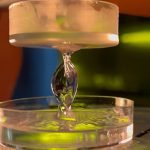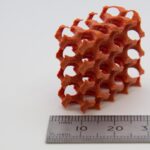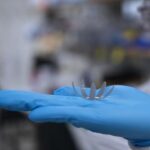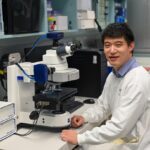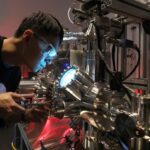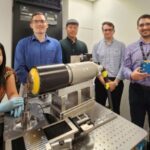Tag: Nature Communications
Diraq achieves breakthrough in quantum entanglement with silicon spin qubits
Australian quantum computing company Diraq has announced a breakthrough in its silicon spin qubit technology, demonstrating a violation of Bell’s inequality — a key benchmark in quantum physics that confirms the presence of entanglement and high qubit fidelity.
New holographic 3D printing method uses sound to build structures
Researchers at the University of California, Davis, have developed a new 3D printing method that uses high-acoustic pressure sound waves to create solid structures.
Researchers amplify 3D printing capabilities with new plastic coating discovery
Researchers at the University of Nottingham's School of Chemistry and Faculty of Engineering have spearheaded the development of a pioneering coating for PA-12 polymer particles utilised in 3D printing.
UNSW engineers achieve quantum milestone with four control methods in single atom
Quantum computing engineers at UNSW Sydney have demonstrated the ability to encode quantum information in four distinct ways within a single atom, all housed within a silicon chip.
UQ researchers unveil 4D printing technology to revolutionise soft robotics
Researchers from the University of Queensland have introduced a new 4D printing technology that is capable of producing shape-shifting liquid metals for soft robotics.
Key antiviral protein TLR7 found to worsen lung diseases, says research
Researchers from the Centenary Institute and the University of Technology Sydney have revealed a surprising connection between the Toll-like receptor 7 (TLR7) protein, typically recognised for its antiviral defense function, and the exacerbation of lung conditions, particularly chronic obstructive pulmonary disease (COPD).
New insights into nanoscale atom behaviour may revolutionise materials science and medicine – research...
Scientists from UNSW Sydney and the University of Cambridge have used novel methods to detect ‘crackling noise, the acoustic representation of atoms' movements in response to pressure, offering potential insights for pioneering studies in materials science and medicine.
Human brains are naturally wired to act like supercomputers, confirms scientists in new study
The human brain is naturally equipped to perform intricate calculations, akin to high-powered computers, through a process known as Bayesian inference, according to a study published in the journal Nature Communications.
Vinegar a potential ingredient in climate crisis fight – Monash engineers
Monash University chemical engineers have developed an industrial process for producing acetic acid that utilises surplus carbon dioxide (CO2) in the atmosphere and has the potential to produce negative carbon emissions.
UNSW researchers develop new tool to enhance hydrogen fuel cell imaging
Researchers from UNSW Sydney have created an algorithm that could produce high-resolution modelled images from lower-resolution micro X-ray CT scans.



